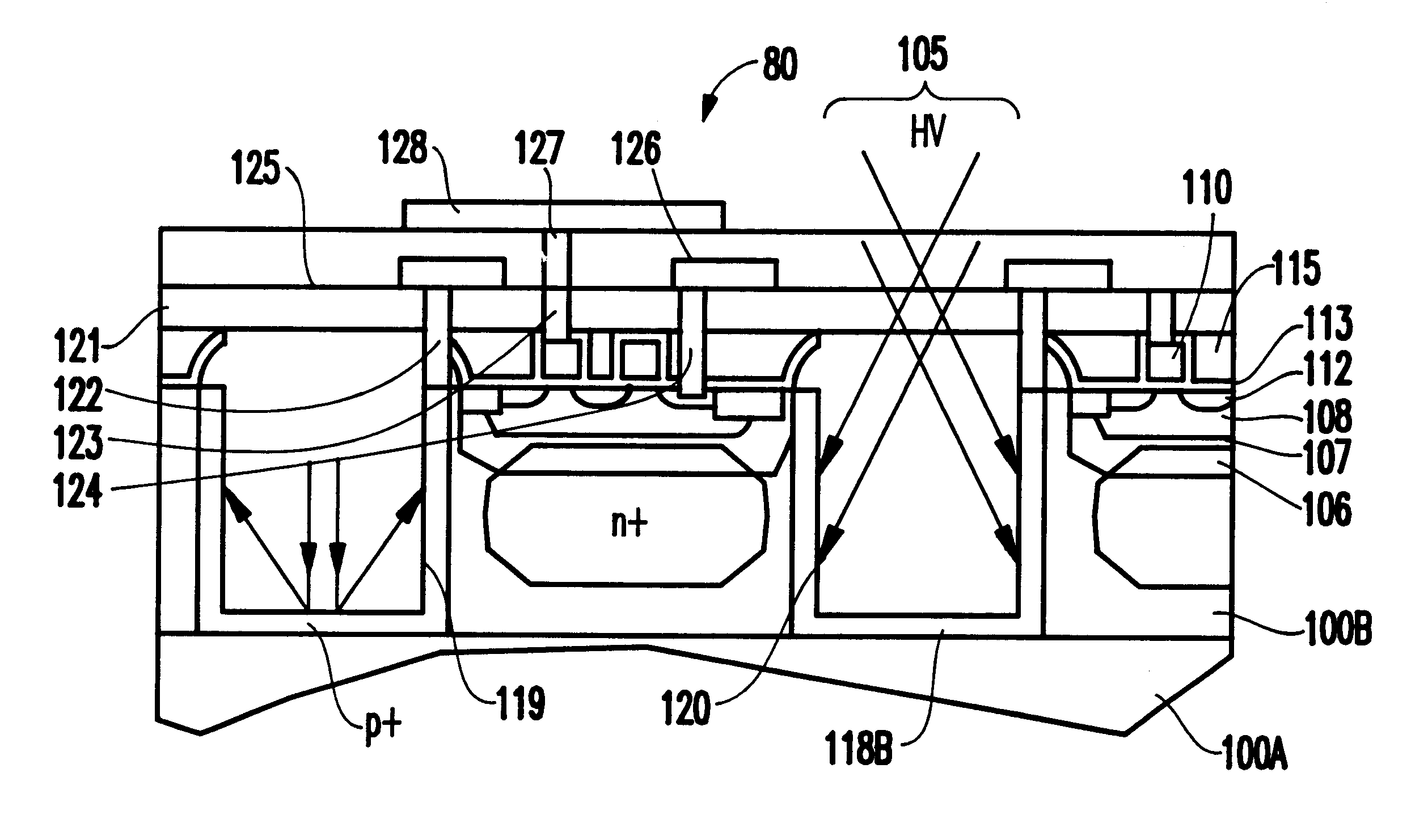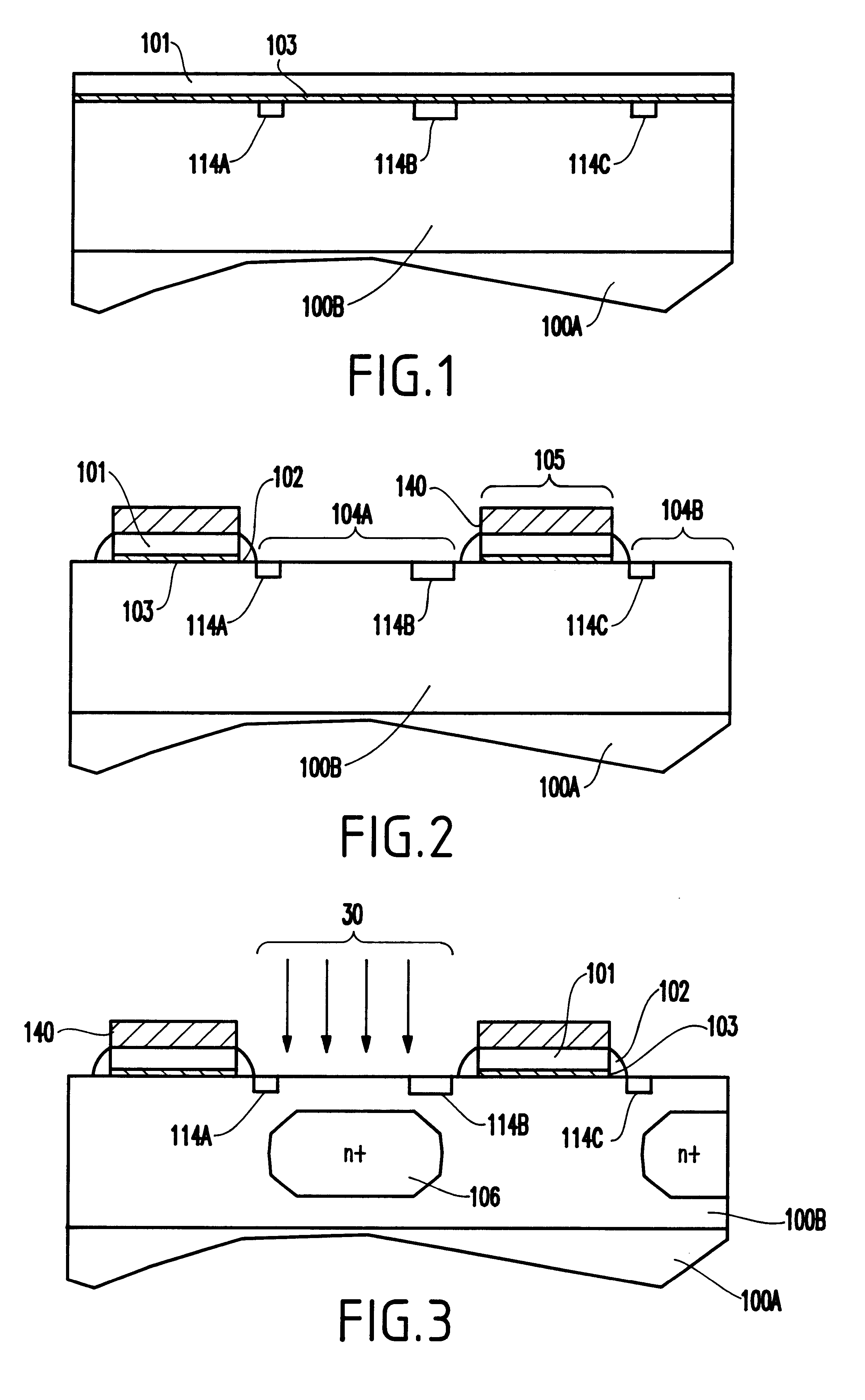Three-dimensional island pixel photo-sensor
a three-dimensional island and photo-sensor technology, applied in the field of three-dimensional island pixel photo-sensors, can solve the problems of p-n diodes degrading further, cmos image sensors have relatively poor pixel density, and higher current flow in the external circui
- Summary
- Abstract
- Description
- Claims
- Application Information
AI Technical Summary
Benefits of technology
Problems solved by technology
Method used
Image
Examples
Embodiment Construction
As shown above, there is a need to increase pixel density in image sensor arrays. The invention increases pixel density with a new photo-sensor pixel structure that has the p+ diffusion of the p-i-n diode formed at the outer edges of pixel islands. Correspondingly, the n+ of the p-i-n diode is formed in the core of the island, and the i layer is the middle ring formed between the outer edge of p+ layer and the n+ core. In the inventive structure, the light absorption regions are located along the vertical walls of the island (e.g, perpendicular to the upper surface of the array). By placing the light absorption regions along the vertical walls of the three-dimensional island, the area occupied by the light absorption regions is increased dramatically resulting in a substantial improvement in diode quantum efficiency.
As shown in FIGS. 12 and 13A, that are discussed in greater detail below, the light absorption regions are perpendicular to the upper surface of the pixel (as opposed to...
PUM
 Login to View More
Login to View More Abstract
Description
Claims
Application Information
 Login to View More
Login to View More - R&D
- Intellectual Property
- Life Sciences
- Materials
- Tech Scout
- Unparalleled Data Quality
- Higher Quality Content
- 60% Fewer Hallucinations
Browse by: Latest US Patents, China's latest patents, Technical Efficacy Thesaurus, Application Domain, Technology Topic, Popular Technical Reports.
© 2025 PatSnap. All rights reserved.Legal|Privacy policy|Modern Slavery Act Transparency Statement|Sitemap|About US| Contact US: help@patsnap.com



